By Alex Trukan
Traditionally, there were two main types of defending orientation: man marking and zonal marking. However, we now rarely see a team applying solely any of those types. It is usually the case of mixing and blending those two approaches depending on the area of the pitch, opponent as well as the players’ characteristics. This is why, it can be observed that a lot of the teams apply zonal orientation but within it, man marking is used to mark certain players in critical spaces or protect areas closer to the own goal. Defenders are therefore challenged to make constant decisions whether to hold the line or follow the attacker within their own and into the next zone.
The starting point is the defensive shape of the team. It will determine which spaces are covered and which areas are left more available. For example, playing with a flat four in midfield will open more spaces to play through the middle, while having five midfielders would encourage wing play. When the opposition is in the controlled possession (and the defending team is defending when organised), the players should work from their assigned defending positions relevant to formation. They would cover space and react to the ball movement rather than to the players movement. There are however, certain triggers that would activate tighter (man to man) marking. One of which is when the attacker enters the ‘zone’ which is marked by certain defender.
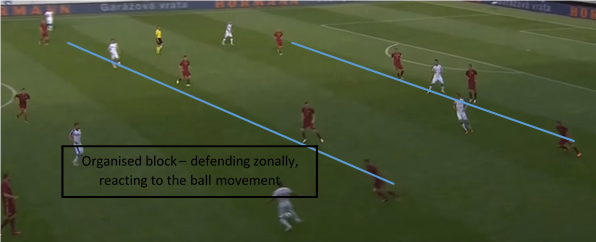
Another example includes attacker making a forward run beyond the defending unit. In case the off side is not applied, the defender should anticipate the movement (player’s on the ball body position, no pressure on the ball, striker starting to shape up for the run) and follow the runner from the goal side.
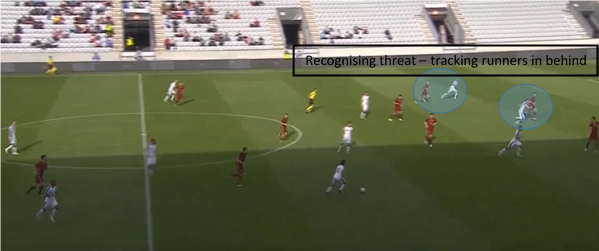
Another example is when an attacking player makes a movement to receive in front of the ball (and in the area where defending team agreed to apply pressing). This is especially dangerous when made in between the lines. In this case the defender that faces the attacker (positioned in the space where the attacker started his movement) should follow him man to man and prevent a pass.
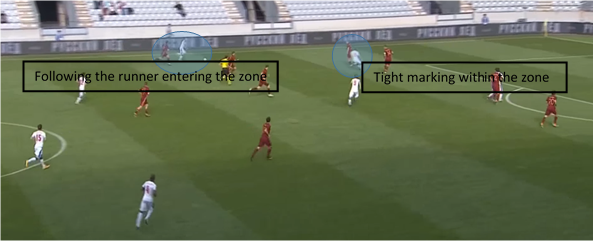
In addition, the player that has released the ball is crucial to mark as he would usually make a movement to receive one-two. This is why, arm distance should be kept at all times between the defender and attacker what will ensure extra time to react to attacker’s run.
[wpsharely id="2988"][/wpsharely]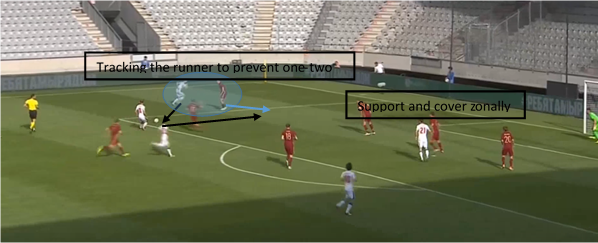
The key to any type of zonal/mixed defending orientation are the small distances between the players and units. If the gaps between players in zones arise, it would be easy for the opposition to exploit that. This is why, players should move within their zone to offer each other support and cover. In other words, ‘react’ to the defending movements of their zonal ‘neighbours’.
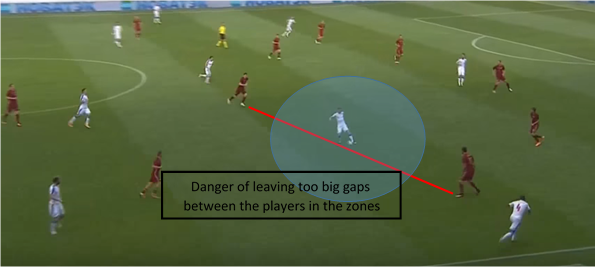
Finally, it is important to consider how the defending orientation vary according to the area where the ball is. For example, most of the teams would choose to apply tight man to man marking around the own penalty box and in the defending third. On the other hand, when the ball is more centrally, it might be more effective to apply mixed marking with individual orientation. It might be also the case that only certain players in certain zones will be marked individually while others will be defended zonally.
By Alex Trukan, Development Coach, Nottingham Forest
@AlexTrukan


